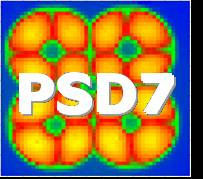Speaker
Mr
Michael Schumaker
(University of Guelph)
Description
The TRIUMF-ISAC Gamma-Ray Escape-Suppressed Spectrometer (TIGRESS)
is a new gamma-ray detector array being developed in order to take
advantage of the radioactive ion beams to be delivered by the new
ISAC-II facility at TRIUMPH. When complete, TIGRESS will consist of
twelve large-volume 32-fold segmented HPGe clover detectors, fitted
with 20-fold segmented Compton-suppression shields. The high
efficiency of TIGRESS, predicted to be ~18% in the "high-efficiency"
and ~10% in the "optimized peak-to-total" configurations for 1MeV
gamma rays, will make it ideal for experiments with low-intensity
radioactive ion beams. However, the photopeak efficiency and the
peak-to-total response degrade as the multiplicity of the emitted
gamma ray increases, due in part to an increase in the probability
of false suppression. In order to counteract this problem, the high
segmentation of the Compton suppression shield will be utilized.
Suppression schemes, in which the suppression of events is based on
analysis of which crystals and suppressor segments are hit have been
developed. In order to accomplish this, data taken from a prototype
TIGRESS detector were used to validate the results of a GEANT4
simulation of the full TIGRESS array. This simulation was used to
examine the changes in peak-to-total and efficiency that result from
the use of different suppression schemes. The results of this
search, and the methodology behind it, will be presented
Primary author
Mr
Michael Schumaker
(University of Guelph)
